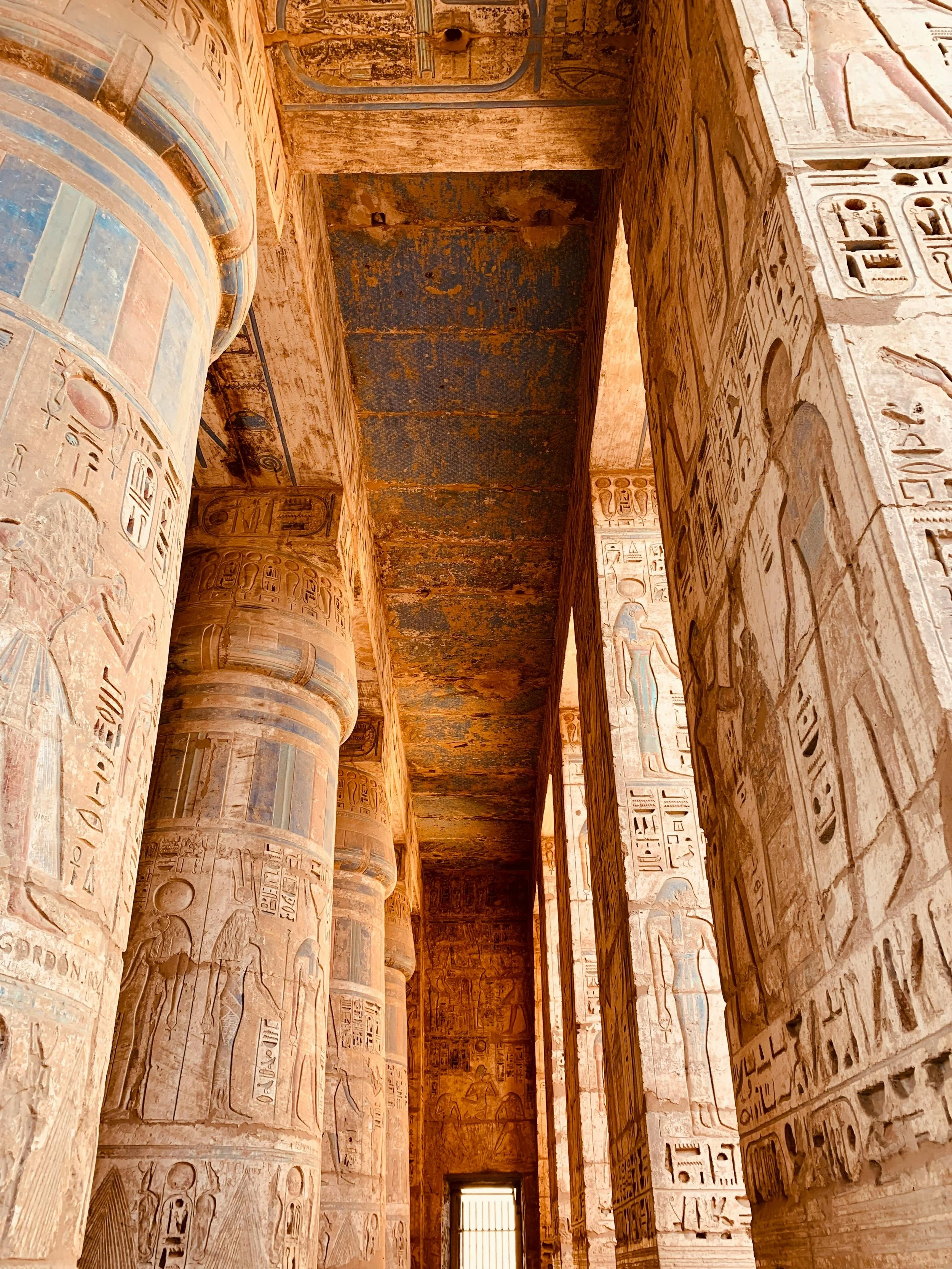Medinet Habu
Ramesses III’s Mortuary Temple
A Fortress in Spirit
On Luxor’s west bank, where the cliffs of Thebes rise over the plain, stands one of Egypt’s most formidable monuments: the mortuary temple of Ramses III, known today as Medinet Habu.
At first sight, it looks less like a temple and more like a fortress. Massive mudbrick walls surround the complex, and the towering entrance gate — a migdol, modeled after Syrian fortresses — rises like a military stronghold. Beyond it lie vast courtyards, pillared halls, and sanctuaries that once echoed with prayers and rituals for the dead king.
Built in the 12th century BCE, Medinet Habu was designed as the eternal house of Ramses III, where his cult would be celebrated long after his death. Yet it was also a declaration of power, its scale and strength reflecting a ruler who defended Egypt during one of its most turbulent eras.
Covering more than 20,000 square meters, Medinet Habu is second only to Karnak in size. But unlike many temples, its walls remain remarkably well-preserved, enclosing a city of stone where religion, politics, and power intertwined.
Experience it
Every surface is carved with reliefs — lines of hieroglyphs, towering figures of the king, scenes of battle and ritual. Unlike many temples where time has softened the details, here the carvings remain sharp, their stories vivid even three thousand years later. Traces of original paint still cling to the stone: deep blues, reds, and yellows that once made the temple blaze with color.
The most famous reliefs depict Ramses III’s battles against the Sea Peoples, mysterious invaders who swept across the Mediterranean in the 12th century BCE. On the outer walls, vast scenes unfold: ships clash on the Nile, archers draw their bows, captives are paraded before the king. Ramses himself appears larger than life, smiting enemies beneath the gaze of the gods.
These images are something special. They are propaganda — declarations of Egypt’s survival and the pharaoh’s divine protection. Ramses III is shown as the defender of the land, chosen by Amun, preserving order against chaos.
Inside, the reliefs shift from war to ritual. The king makes offerings to the gods, joins in festivals, and performs the ceremonies that linked him to the divine. Together, these carvings form a complete portrait: Ramses as warrior, priest, and eternal ruler.
Experience it
Medinet Habu outlasted the reign of Ramses III.
Long after his cult had faded, the temple remained useful because of its walls. In later centuries, when Egypt faced instability, its massive enclosure became a refuge. Entire communities lived within the complex, building houses and churches among the ruins. The fortified gate, once a symbol of royal power, became a shield for ordinary life.
This layering of history has helped the temple endure. Unlike many mortuary temples that collapsed or disappeared under the floods of the Nile, Medinet Habu’s walls survived, preserving some of the finest and most colorful reliefs in all of Egypt. Even today, the ceilings of its pillared halls still show bright blue stars, the gods still wear their crowns in red and gold, and the figures of Ramses still stride across the stone.
For modern visitors, the experience of Medinet Habu is different from Karnak or Luxor Temple. Here, the crowds are fewer, the atmosphere quieter. The vast courtyards open into silence, the reliefs wait in shadowed halls, and the scale of the walls makes you feel both small and awed.
It is not only the story of Ramses III that lingers here, but the sense of continuity — a place where kings, priests, villagers, and travelers have all found shelter in the shadow of its stones.
We invite you to experience this moment for yourself.
Join our private, curated journeys through Egypt, where expert guides, seamless service, and privileged access bring history to life—one temple, one sunrise, one story at a time.
Medinet Habu awaits.



